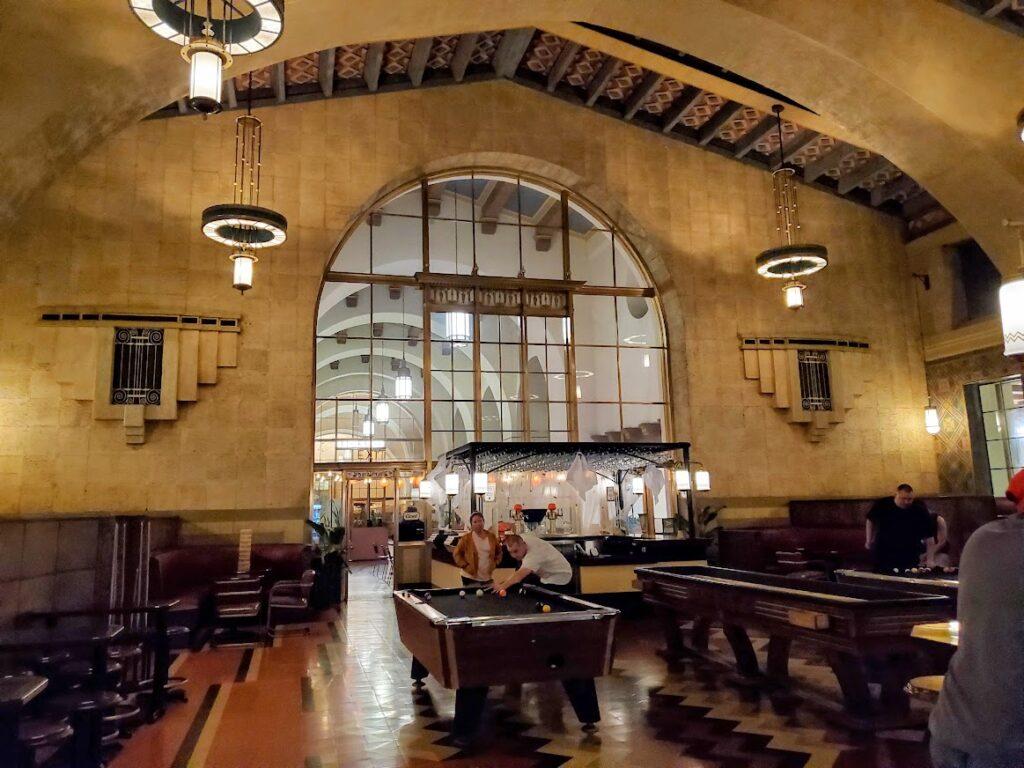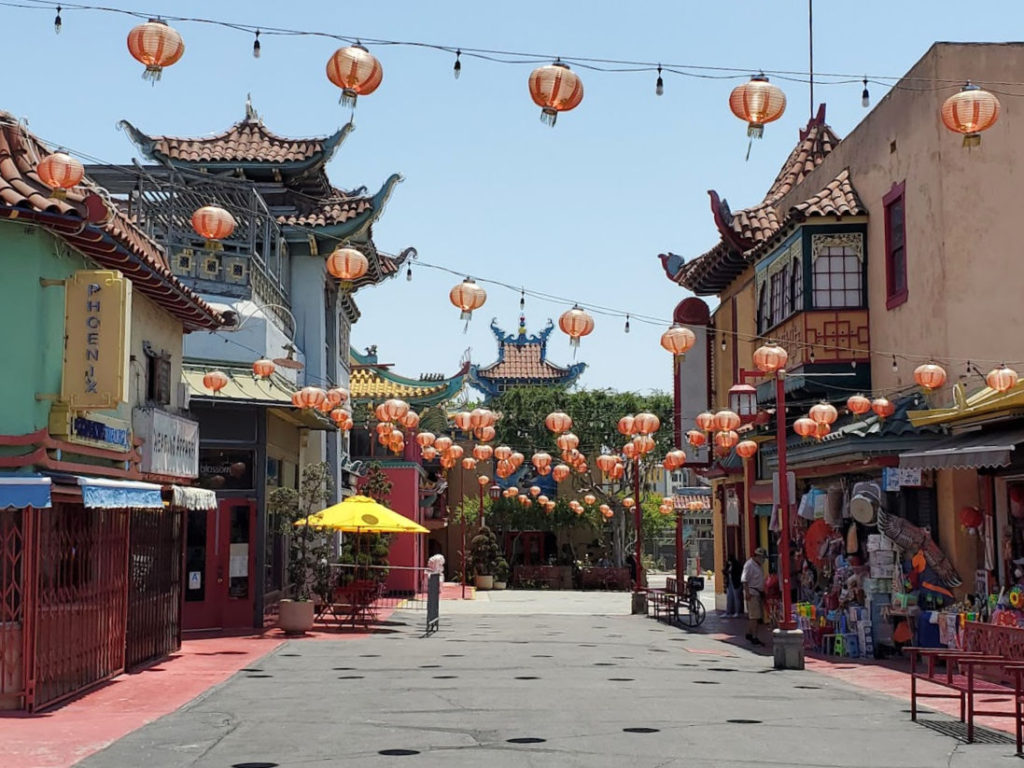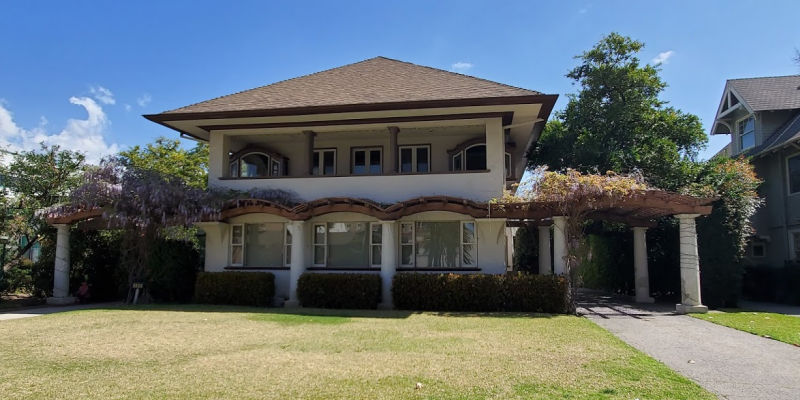March is Women’s History Month and there are always so many incredible women to celebrate. As a resident of Los Angeles, I thought it would be cool to feature just a few of the prominent women who made an impact on L.A. in the past.
I took two virtual tours during the pandemic that were hosted by the Los Angeles Conservancy and LA Walking Tours. Both were excellent and informative. If you love walking or virtual tours, I highly recommend them.
Los Angeles is a city that has always nurtured strong women and given them the freedom to contribute to its history, culture, business, and architecture. It was a stronghold for the women’s movement for over 100 years and welcomes diversity, progressive ideas, and innovation.
Below are just a handful of the amazing women of Los Angeles.
Lemonade maven
Women in California were granted the freedom to own land in 1849 when it became a state and it was written into the California Constitution. The fear was that Mexican women who married English-speaking settlers would lose their land to their husbands.
One of the catalysts of this decision was a woman named Eulalia Pérez de Guillén Mariné, who was born in Laredo, Mexico in 1766. She married a soldier at 15 and gave him 12 children with 7 surviving. When her husband died, she was gifted a 14,000-acre rancho near Mission San Gabriel. She later remarried only to have her husband gamble away her land.
Eulalia was one of the creators of lemonade. The missions had vast citrus orchards and she took the lemons and turned them into a refreshing beverage. It was one of the first products that were exported to Spain.
She died in 1878 claiming she was 139 years old. It is more likely that she was 112, which was miraculous during that time period.
The women of transportation
You may have seen the classic film “The Harvey Girls” with Judy Garland and Angela Lansbury. Did you know there was a Harvey Restaurant at Union Station in Downtown L.A.? Harvey Restaurants were built at train stops starting in the late 1870s because there were no dining cars on trains at that time. The meal accommodations at most stops were dirty and disgusting.

The Union Station Harvey restaurant is now the home of Homebound Brewhaus.
Each Harvey Girl was well-educated, well-groomed, unmarried, between the ages of 18-30, and had high moral values. They worked as servers and signed 6-month contracts.
What was significant about the Harvey Girls, was that many women in the Old West were either prostitutes or of low repute. The Harvey Girls were said to have “civilized the West.”
Mary Colter (1869 – 1958) designed the Harvey Restaurant at Union Station. She went to art school, became an architect, and became the chief architect for Harvey Restaurants. The restaurant features her signature style of Native American, Hispanic, and rustic design. She also designed and completed 21 hotels and lodges including a series of buildings at the Grand Canyon National Park.
Arcola Philpot (1913-1991) was a streetcar operator and became L.A.’s first African American motorman in 1944. It was a struggle for her to get hired because she was black. She drove the F line from 116th Street to Union Station.
Leilia M Bailey (1939 – present) was hired in the 1970s as a bus operator and became the Director of Transportation for the L.A. Metro. She also helped organize the 1984 Olympics.
Chinese women in Los Angeles history
Anna May Wong (1905 – 1961) was a Chinese American actress who grew up in the original Chinatown (where Union Station is today) before it was moved to its current location. Movie companies often filmed there and she became infatuated with the film industry as a child, begging the companies to include her in their films.
She dropped out of high school and played her first leading role in a film at the age of 17. Her race typecasted her as either an innocent flower or a dragon lady. Movies such as The Good Earth hired whites to play leading Asian roles.
Anna May started her own production company, but her business partner was shady, and she sued him. She was also known as a fashion icon because of her exotic appearance. During the late 1920s, she left for Europe and worked in European films where she received much acclaim. Scouts from Hollywood found her there and coerced her to come back promising her a thriving career.
Her race still made it difficult to achieve the recognition she dreamed of but she later became an activist for Chinese causes and was present at the opening of the New Chinatown. She became an icon and advocate for Chinese women in Los Angeles.

Yiu Hai Seto Quon (1899 – 1999) was known as “Mama Quon.” She owned the Grand Star Restaurant in L.A’.s Chinatown and was one of the founders of the New Chinatown. Members of her family had founded the original Chinatown. Mama Quon was a businesswoman, chef, and community leader who lived to the ripe old age of 100.
Esther Wong (1917 – 2005) was born in China and was the owner of Madame Wong’s Chinese Restaurant in Chinatown and Madame Wong’s West in West LA. She was known as the Godmother of punk music and hosted punk bands in her venues during the 1980s. She insisted the bands leave the restaurant exactly as they found it.
Bands that played at her restaurants included Los Lobos, The Motels, The Police, The Go Gos, Oingo Boingo, Guns N Roses, and many more. I went there in the 80s and saw some of them.
Mei Ling Way, located in Chinatown, was named after Madame Chiang Kai-shek. Her advocacy led to the repeal of the Chinese Exclusion Act and both she and her husband were named the Man and Woman of the Year in 1938.
Black women’s history icons in L.A.
Miriam Matthews (1905 – 2003) was the first black librarian in Los Angeles. She discovered a small collection of books on Black History at the library where she was working and built it into a significant collection. She pioneered efforts to establish Negro History Week which is now Black History Month celebrated in February.
Bridget Biddy Mason (1818 – 1891) was a former slave who won her freedom and settled in Los Angeles. She worked as a midwife, operated an orphanage, and founded the city’s first A.M.E. church. She saved her money, bought the land, and built a home at 311 Spring Street in Los Angeles.
Her wealth was estimated at about $3 million dollars. She became a philanthropist donating to numerous charities, founding a traveler’s aid center, and establishing an elementary school for black children. Biddy Mason Memorial Park is named after her. She is buried in Evergreen Cemetery in Boyle Heights.
Women on the beat
Alice Stebbin Wells (1873 – 1957) was the first American-born female police officer in Los Angeles hired in 1910. She didn’t have a gun and worked mostly with women. She even had to make her own uniform. A 1914 film was made about her life called The Policewoman. She was the first woman in the L.A. Police Association and achieved the rank of Sergeant in 1934.
Margaret Queen Adams (1874 – 1974) was the first female deputy sheriff in the US for the Los Angeles County Sheriff’s Office. She was buried with her sheriff’s badge just 6 months short of her 100th birthday.
Georgia Ann Robinson (1879 – 1961) was the first African American woman police officer to work for the Los Angeles Police Department. In 1916 there was a shortage of police officers because of the war. She volunteered to work for the police department without pay and after several months received a small salary. She would refer women to agencies rather than have them go to prison so they could be rehabilitated.
Robinson founded the Sojourner Truth Home as a shelter for women and girls. In 1921, she was blinded during a women’s prison fight but continued to work until she passed away in 1961.
Builders and engineers
Florence Casler (1869 – 1954) took over her husband’s plumbing business after he abandoned her to search for gold leaving her with 2 children to take care of. He passed away in 1912 and she became involved with building development in the fashion district of downtown LA.
She created workspaces for women that included adequate bathrooms, heating, and lighting. Casler also built the Textile Center in 1926 which is now condos and the Bendix Building, which is still used by fashion companies. She oversaw the construction of 7 million dollars worth of buildings and was elected director of the People’s Bank of Los Angeles in 1925.
Marilyn Jorgenson Reece (1926 – 2004) was the first woman licensed as a civil engineer in California. She helped build the freeways and the interchange of the 10 and 405 is named after her. Her husband and daughter were also civil engineers.
Julia Morgan (1872 – 1957) graduated with a degree in civil engineering in 1894. She studied architecture in Paris and became the first female architect in Los Angeles. After the San Francisco earthquake, she oversaw much of the rebuilding.
She worked with William Randolph Hearst to build the Examiner Building in Los Angeles and worked with him on Hearst Castle. Other buildings she designed included the Pasadena YMCA, Hollywood Studio Club, where aspiring actresses like Marilyn Monroe lived, and the Greek Theatre.
Maude N Bouldin (1893 – 1966) was the first female manager of the Hotel Figueroa during the 1920s and 30s. It was built by the YWCA as a safe haven for solo women travelers and was financed and managed by them. Maude also flew planes and raced cars and motorcycles. The hotel was the center for social clubs, political organizations, and women working in the creative arts. Its history is deeply rooted in the women’s movement.
Florence Yoch (1890 – 1972) and Lucile Council – (1898 – 1964) designed the Women’s Athletic Club, which is no longer standing. They were a Lesbian couple who worked on design projects that included the art direction in films like Gone with the Wind.
A woman’s struggle to attain celebrity
Lena Horne, (1917 – 2010) was a renowned actress and singer who debuted on the Sunset Strip and was signed by MGM. She lobbied for the role of Julie in Showboat but due to production codes that banned interracial relationships was denied the part. Ava Gardner, who was a close friend of hers, got the role instead and practiced by singing along with recordings by Horne. Gardner’s singing was dubbed in the film.
Horne then embarked on a successful nightclub career and in 1958 was the first Black woman nominated for a Tony Award. She appeared in TV specials and television. On stage, she refused to perform for segregated audiences and in the 1940s sued restaurants for race discrimination.
Newspaper woman
Charlotta Spears Bass (1880 – 1969) grew up in the Jim Crow South but moved to Rhode Island and learned the newspaper business. She moved to Los Angeles and met a man who ran the newspaper The Owl. She worked for him and inherited his business when he died. The newspaper was later renamed The California Eagle.
Bass organized women to vote after they earned the right in 1911. Her On the Sidewalk column brought attention to black issues of the day and by the mid-1930s she was well-regarded and her circulation was 30,000.
After her 2nd husband died, she moved into activism and became the first African American woman to run for Vice President in 1952. The FBI monitored her activity thinking she was a security threat until she was in her 90s.
Caregiving women
Dr. Sarah Vasen (1870 – 1944) was the 1st Jewish female physician in Los Angeles and its first managing physician. She was a gynecologist and worked at the Kaspar Cohn Hospital in Angelino Heights which was housed in the Luckenbach House. She retired from the hospital in 1910 to help the Jewish community. Kaspar Cohn became Cedars of Lebanon Hospital and later Cedars Sinai Hospital.
Dr. Margaret Chung (1889 – 1959) believed that women needed to know how to take care of themselves and their children. She enrolled in medical school in 1911 but couldn’t get a job. At first, she worked as a nurse but later became a surgeon and established the first Western medicine clinic in San Francisco’s Chinatown during the 1920s.
In Los Angeles, she became known as a physician to the stars.
Dr. Chung volunteered to serve as a frontline surgeon during the Sino-Japanese war but instead, was asked to recruit pilots for what would become the Flying Tigers. These squadrons were American pilots from all branches of the military who flew under Chinese colors. They became known as Mom Chung’s adopted sons.
During WWII she helped establish the WAVES (U.S. Naval Women’s Reserve) but was not permitted to join because the government believed she was a lesbian so she was not properly credited.
Other Los Angeles women in history
Clara Shortridge Foltz (1849 – 1934) became the first female lawyer in Los Angeles after she and her children were abandoned by her husband. She had to lobby the California Legislature to take the bar exam. She practiced law all over California, dabbled in mining and stock exchanges, started her own magazine called “The New American Woman,” and ran for Governor. The Clara Shortridge Foltz Criminal Justice Building in downtown Los Angeles is named for her.
Christine Sterling (1881 – 1963) was a wealthy and well-connected socialite in Los Angeles who wanted to preserve the old buildings near Union Station that were in disrepair and its Mexican Heritage. Her vision was to create a Mexican Marketplace and in 1930 she created Olvera Street filled with restaurants, street vendors, and mariachi music. It is the site of Mexican celebrations, and festivals, and is a tourist attraction to this day.
Another project of hers was to create China City which was a mock Chinese Village with restaurants to replace Old Chinatown. It was leveled to make way for Union Station. China City opened in 1938 but was destroyed by a fire in 1948. It was more of a tourist attraction and was also used by film companies.
Gloria Crane Gartz (1907 – 1994) founded the Pasadena Women’s City Club in 1945. She promoted progressive causes and supported the Girl Scouts. The Women’s City Club was created as a private club environment for business, civic affairs, education, and philanthropy as well as non-profit causes.
Kate Crane Gartz (1865 – 1949) was Gloria’s mother and was the heiress to the Crane Plumbing fortune. She hosted guests such as Albert Einstein, Upton Sinclair, Charlie Chaplin, and Henry Ford, and occasionally held seances. She was labeled a Bolshevik and was one of the founders of the Pasadena Playhouse.

Greta Magnusson-Grossman (1906-1999) was an award-winning Swedish furniture designer who immigrated to the U.S. in 1940 and settled in California. She helped shape the architectural scene in Los Angeles and was one of the first people to introduce Swedish modernism to America.
She was quoted in 1951 saying that California design “is not a superimposed style, but an answer to present conditions. It has developed out of our own preference for living in a modern way.” The homes she designed were crafted with classic modern materials like steel and stone and incorporated rich woods and warm natural light.
Harriet Williams Russell Strong (1844 – 1926) founded the Ebell of Los Angeles, a women’s club in 1894. She served as President for three consecutive terms. The mission of the Ebell is “to interest women in the study of all branches of literature, art, and science and the advancement of women in every branch of culture.”
The organization is still active to this day at the historic Ebell on Wilshire in Hancock Park. Members work on philanthropic causes, and present concerts, lectures, and other women-centered events.
Strong was also the primary innovator of dry land irrigation and water conservation techniques in late 19th century southern California.
Read about more contributions from women of color.
In summary
If I were to list all the women in history who built and influenced Los Angeles, it would be an epic undertaking. So many have contributed from the famous to the obscure. But, it’s a testament to remember them for their struggles, influence, talent, and generosity.
Update 3/2023
Who are the women you want to remember for Women’s History Month? Please leave a comment below.

Such an interesting group of women. You’re whetting my appetite for taking a virtual tour of L.A. Have to do that one of these days.
I hope you do take a virtual tour of LA, Laurie. It has a fascinating history.